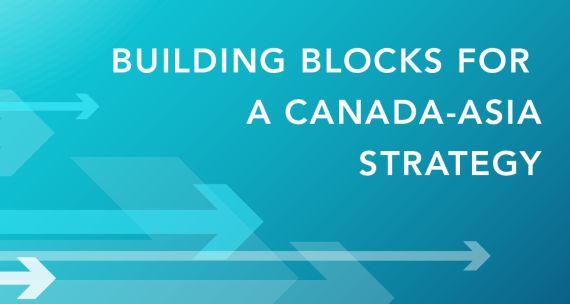While Canadians politely deliberate the importance of Asia, our international partners have been aggressively building ties and vying to secure prosperous relations in the region. If Canada wants to remain politically relevant and secure its own economic future in a more Asia-centric world, deeper engagement with Asia is a must.
The rise of Asia marks one of the defining shifts of the 21st century. Within five years, Asia will represent 44 per cent of the world’s gross domestic product, 54 per cent of the global middle class, and will consume $4.8-trillion (U.S.) annually – 42 per cent of the world’s total consumption.
Responding to this dramatic global shift, the government of Canada has accelerated its engagement with Asia, making trade with China and India a pillar of its overseas agenda, and launching foreign trade missions and negotiating free-trade agreements with renewed enthusiasm.
And yet, despite being a “Pacific nation” with approximately 60 per cent of all new immigration originating in Asia, Canada remains marginalized in many of its relationships with Asian countries, while its sometimes inconsistent commitment to a strategy is costing us in building the necessary trade architecture in the region.
Canada has been fortunate to have sources of growth and stability in traditional partners such as the United States and Europe, and these partnerships must not be ignored. But our new government has an opportunity to articulate a more targeted and strategic approach to engaging Asia that both advances Canadian national interests and contributes to the sustainable development and growth of the region.
On Thursday morning, at Canada 2020’s Ottawa Forum, the Asia Pacific Foundation of Canada is unveiling its Building Blocks for a Canada-Asia Strategy. This non-partisan strategy paper outlines a series of recommendations for the federal government to consider as it articulates its response to the rise of Asia as a global economic power and political force. Supporting a long-term and uniquely Canadian approach to the region, the document seeks to address Asia as a whole, advocating that Canada avoid a “one-size-fits-all” approach, and rather build a strategy that takes into account the sheer size, vastness and diversity of the entire Asia Pacific.
The growing complexity of Asia results from unique drivers of change that are shaping its future. These include developments in regional politics and security (for example, disparate competing polities); economics (the meteoric rise of the middle class); emerging global issues (climate change impacts, including water and food security); technology and innovation (the democratizing impact of the Internet); and demographics (the unique challenges of “silver tsunami” and “youth bulge” populations).
We believe that an effective, forward-looking Canada-Asia strategy must take into account these drivers of change, and achieve four key objectives:
1. Position Canada as a relevant and important partner to Asia.
2. Ensure that Canada benefits from Asia’s development and growth through improving market access and trade opportunities in competitive sectors.
3. Leverage Canada’s strengths to support a secure and sustainable Asia region.
4. Build Canada’s Asia competence by improving Canadians’ related skills and knowledge.
Our paper includes 10 actionable recommendations for the government of Canada and prioritizes three recommendations that call for immediate action:
• Work with Parliament to ratify the Trans-Pacific Partnership, and accelerate negotiations on a Canada-China free-trade agreement and the Canada-Japan Economic Partnership Agreement.
• Develop a new generation of trade promotion strategies and mechanisms targeting Asia that take into account the specific challenges faced by small and medium-sized enterprise in the region while focusing on a few core sectors, including agriculture and agricultural logistics, clean technologies and digital media.
• Spearhead and support initiatives that help Canadians become more Asia-competent. This includes familiarity with the diversity of Asian cultures; knowledge about the region’s economies, societies and political systems; and the ability to speak Asian languages.
What’s needed now is leadership from across the political spectrum to build a consensus, investment of time and money by business, and a commitment by the public to learn more about opportunities in Asia. Canada needs to be actively promoting its ideas, its goods and its talents in the new centre of gravity for global economic and political decision making and action.
This piece was first published in the Globe and Mail on January 28, 2016.



